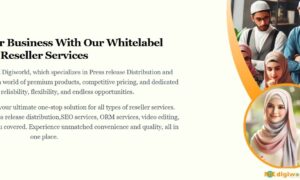Did you know that poor requirement management (RM) is the most common cause of project flops—even more common than faulty technology, ignored timelines, and miscommunication down the hierarchy? In fact, according to an analyst survey, a whopping 71% of software projects fail due to a lack of reliable and effective requirements management tools.
Regardless of the approach—traditional or agile-–in any industry, from production to software development, managing requirements is critical for a project’s success. This is why most forward-thinking Project Managers (PMs) and Business Analysts (BAs) have already come to appreciate this notion and are maximizing the efficiency of RM tools in managing projects.
Stay put as we comprehensively discuss the RM process, its benefits, best practices, and challenges.
But first things first….
What is requirements management (RM)?
It is an official method employed during product development to collect and analyze requirements to satisfy clients’ and management’s needs.
Interestingly, although RM was initially adopted from system engineering, it is now employed in business analysis and project management to manage and develop features that appeal to customers.
The BAs and PMs start by developing a requirements management plan (RMP), also known as a business analysis plan. The plan lists, monitors, refines and verifies every feature to meet your project goals.
Why is requirements management important?
Requirements management is essential because it guarantees that the solution will satisfy the clients’ necessities. Unfortunately, most projects flop for undefined scope, delayed timelines, or subpar quality.
RM minimizes these risks by bridging the company’s objective and the development team’s target to ensure process transparency and clear communication.
The process reinforces a general comprehension of the objectives and allows the team responsible for the development to define and regulate the scope. You also get tools to achieve goals, reduce expenses, fasten product launches, and improve product quality.
The requirements management process
An agile requirements management process is completed in the following steps: eliciting, analyzing, specifying, and verifying. Let’s discuss these steps further!
Step 1: Requirements elicitation
At this first step, the development group discusses alongside shareholders to identify the needs by employing any of these strategies:
Meetings: You can facilitate a focus group session to determine the vision with questions like;
- Who is our product’s target audience?
- What should the final product resemble?
- Where should the process begin?
- When should the feature be utilized?
- How does the final product align with the company’s goals?
Analyzing existing documents: Documents like a request for a proposal often contain relevant information on the project. There may also be surveys on the project to review; if there aren’t, consider creating some.
Hands-on observation: Your team can identify your model users and observe their needs as they interact with the product. You can also find some already existing capabilities to upgrade to satisfy your customers’ needs.
Interactive sessions: In these sessions, your team can create an ideal user journey and then walk that path as a user to identify features they may need.
Reviewing the Interface: By analyzing the interface, you can identify the requirements to achieve a solution with the product.
Step 2: Requirements analysis
BAs use dedicated methods and tools to examine necessities carefully and display relevant information via business process models. So, the team appreciates each stage of development from a model that produces simplified visual guides like flowcharts, gap analysis, etc.
The BA or PM can as well carry out an effective test to determine if there will be consequences of the intended changes. Additionally, they may walk a user’s journey to understand the possible experience with the proposed alterations.
Step 3: Requirements specification
Here, you can describe every need, passing them through the checklist to ensure it is well-defined:
- Find one recent, related, and specific need and ensure it doesn’t contradict others.
- Be sure it is vital to achieving the overall goal.
- Write your descriptors clearly in bite-size language.
- Determine relevant information and features with correct percentages.
- The features should be provable and authenticated via thorough analysis.
- The execution should be within the budget and abilities of the technical group.
- Every stage of the developmental lifecycle should be trackable.
- BAs and PMs need to discuss with shareholders to decide which requirements are essential enough to be added to the first release.
Step 4: Requirements verification and validation
This is the last of the steps of requirements management. Here, your team should conduct assessments with the data garnered to spot mistakes and check the product’s usability. A thorough requirement review tests accuracy, extensiveness, viability, reliability, and simplicity, producing a list of possible errors and steps to correct them.
After ensuring the feature is of reliable quality, complete, and void of errors, you can review the errors from tests to develop a maintenance plan, especially for needs that may need ungraded versions.
Best Practices for requirements management
The overall excellence of your software is fundamentally hinged on its needs. That’s why adopting the best practices for requirements management ensures the requirement definition and clear communication for the best, cost-effective, and high-quality products.
Some of the best practices include:
- Ensure transparency in communication with the team and management about the RM procedure and encourage feedback
- Incorporate RM as a standard operation part across every company goal.
- Start using the RMP from the start and throughout the task and ensure the team members appreciate the need.
- Ensure you do not alter the fundamental needs without approval and a plan.
- Minimize sudden decisions.
- Monitor the performance of necessities by linking them to a test.
- Employ RM tools to quicken timelines, processes, and communication gaps.
- Include industry rules and laws in your needs to ensure industry compliance.
- Encourage the development teams by sharing the effect of their jobs in real-time.
Common challenges in requirements management
Even RM doesn’t come without challenges. Here are some common challenges in RM.
1- Lack of a repository
The repository is a centralized source of every requirement, accessible to approved users. An absence of this source can affect teamwork and compromise communication flow between developers, PMs, and management.
2- Rigid tests for impact
The effect analysis of requirements alterations will become more complicated as your project gets complex. So one random requirement change can cause alterations on other needs, bugs, or test cases you can’t trace if you use a manual document.
3- Undefined priorities
This is another common issue with RM–receiving sudden changes from shareholders. It happens when the development group is tasked with implementing new customer demands before they are approved.
This often happens if some key stakeholders’ inputs are excluded or ignored, and it can cause a delay in launch time and an increase in budget.
4- Inefficient RM
There will always be changes when you are developing a product. However, an inefficient system of storing and managing these requirements will cause constant reworking, increase timelines, and reduce productivity.
Conclusion
While they remain remarkable tools, there is only so much Word and Excel can achieve in a requirements management process plan, especially with complex developments. That’s why you need a flexible tool to meet your teams and customers’ necessities.
At aqua, we offer a management tool that makes planning, managing, and reporting seamless regardless of location. Our tool ensures increased efficiency with automated workflows, transparency with the simplified dashboard, and seamless communication.
Contact us today to keep your team connected!





























